*FYI - this post may contain affiliate links, which means we earn a commission at no extra cost to you if you purchase from them. Also, as an Amazon Associate I earn from qualifying purchases. Check out our Privacy Policy and Disclosure. for more info.
Exciting, opulent, and painfully beautiful, the sun-soaked city of Seville is a true feast for the senses… turning millions of visitors into doting fans each year with its lush beauty and effortless charm.
Today, Seville is best known as the capital of scenic Andalusia, but trace its history back and you’ll see it has many more impressive accolades under its belt.
For one – it was the capital of Muslim Spain, a legacy which can still be felt today through its abundance of Moorish palaces and architecture. It’s also home to a number of spots flaunting UNESCO World Heritage status… and (since they like to show off), the world’s largest Gothic church can be found here as well.
The fact that it was 45 degrees Celsius during my visit, and I still loved it speaks volumes. And I can’t wait to go back again!
So what is there to actually do in Seville, Spain? Read on for a list of the best Seville must-dos from classic attractions like the Alcázar of Seville and Seville Cathedral to a truly shocking number of palaces. I hope you find this list helpful!
1. Royal Alcázar of Seville
No doubt, the main attraction for most visitors in Seville is the Royal Alcázar of Seville, a Moorish fort turned royal palace that has (throughout its extensive history) housed both Moorish kings and Christian monarchs alike.
A visit here is a droolworthy treat for the senses, with highlights including its exquisite combination of Mudéjar and Christian architecture, intricately tiled courtyards, lush gardens filled with fragrant orange trees, and its breathtaking Hall of Ambassadors, complete with a dazzling dome ceiling.
… oh, and for Game of Thrones fans, you might recognize it from its stint as Dorne (specifically as the Old Palace, seat of House Martell).
Practical tips for visiting:
- Book your tickets ahead of time as the lines can get really long and sometimes they decide that they’re just full for the day!
- Factor in enough time (at least 2 hours) to explore properly, this isn’t an attraction you will whizz through, trust me.
- If you want to see the Royal Bedrooms, you’ll need to buy tickets separately when you get there.
- Don’t miss out on seeing the gardens!
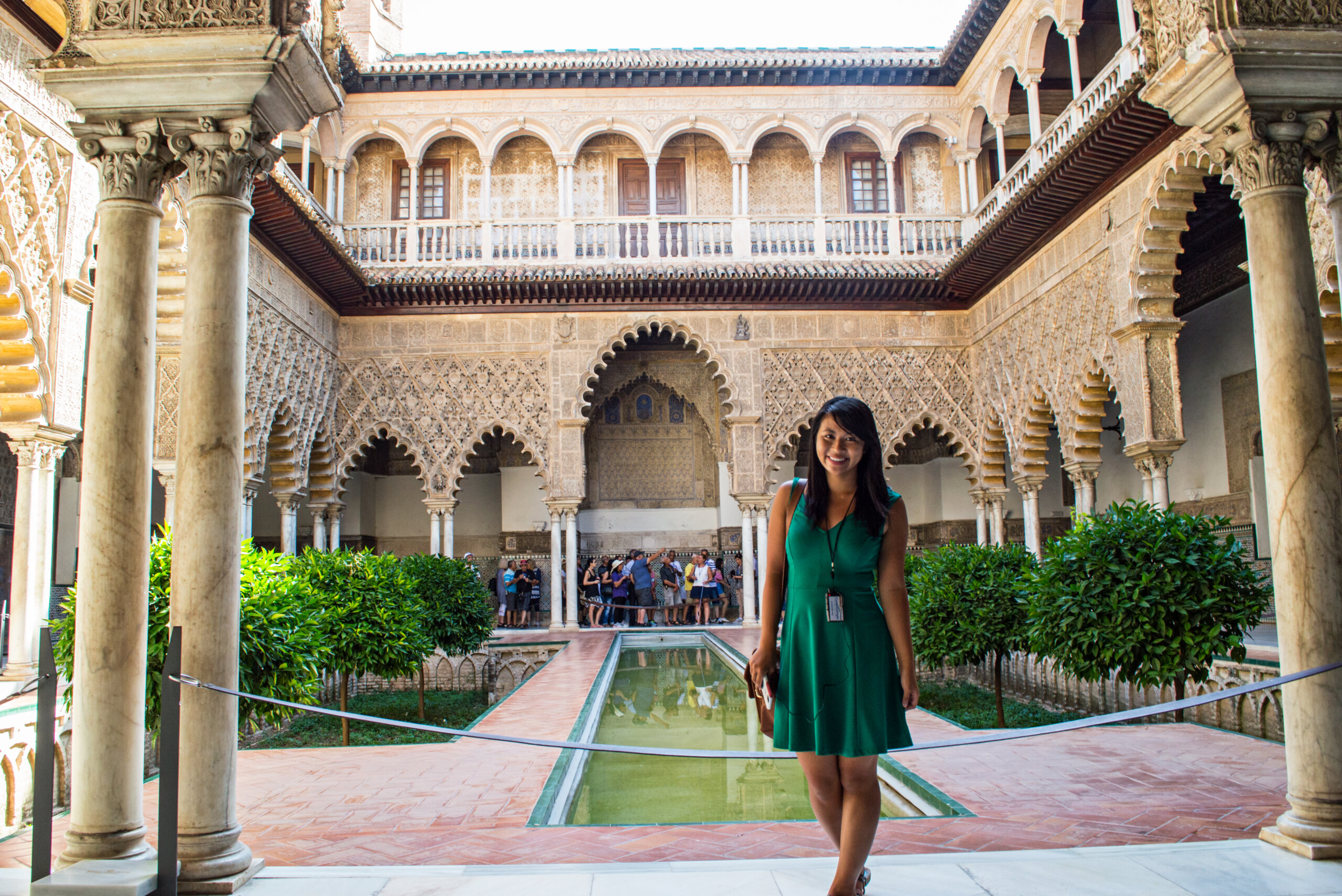
2. Jardines de Murillo
Connected to the Royal Alcázar of Seville are the dreamy Jardines de Murillo, lush gardens filled with shaded pathways, scenic ponds, picturesque fountains, and colourful floral displays.
Highlights of these gardens include…
- Christopher Columbus Monument: A truly epic 23-metre high monument to the explorer, with a lion on top and the prows of two ships in the middle.
- Catalina de Ribera Fountain: A large monument with a small fountain at the base, dedicated to the 16th century noblewoman Catalina de Ribera, who funded the founding of the Hospital de las Cinco Llagas (more on that in the Macarena section).
- José García Ramos Plaza: A sort of little roundabout plaza with a tiled fountain in the middle and tile artworks dedicated to the Seville artist José García Ramos around the edges.
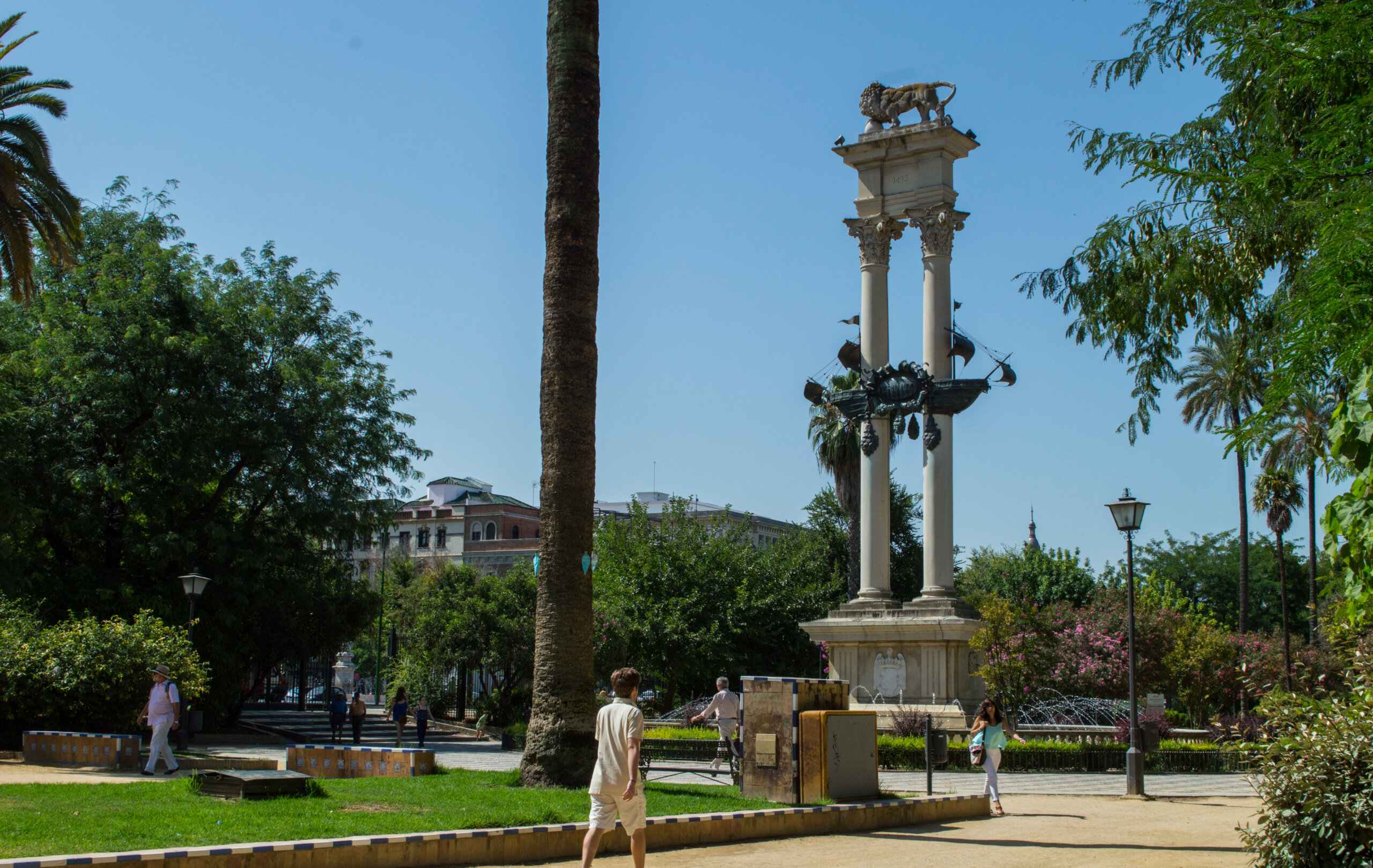
3. See the Archive of the Indies
Another must-see in Seville for history buffs is the Archive of the Indies, established in the 16th century by King Philip II to serve as a central repository for documents related to Spain’s overseas territories, particularly those in the Americas.
(For better or for worse) its strategic location in Seville, a major port city during the Age of Discovery, facilitated the management and administration of Spain’s vast colonial empire which spanned over 13 million square kilometres at its peak.
Today, the archive houses millions of documents dating back to the 15th century, including maps, charts, letters, and legal records that provide insights into the exploration (and colonization) that have shaped the Americas as we know them today.
Practical tips for visiting:
- The Archive is free to visit but you can join a guided tour if you want to learn more about the history of the building and it’s contents
- It’s open Tuesday – Saturday from 9:30am until 4:30pm and on Sundays and public holidays from 10am until 1:30pm
- It’s right next door to the Seville Cathedral so you can easily visit both together
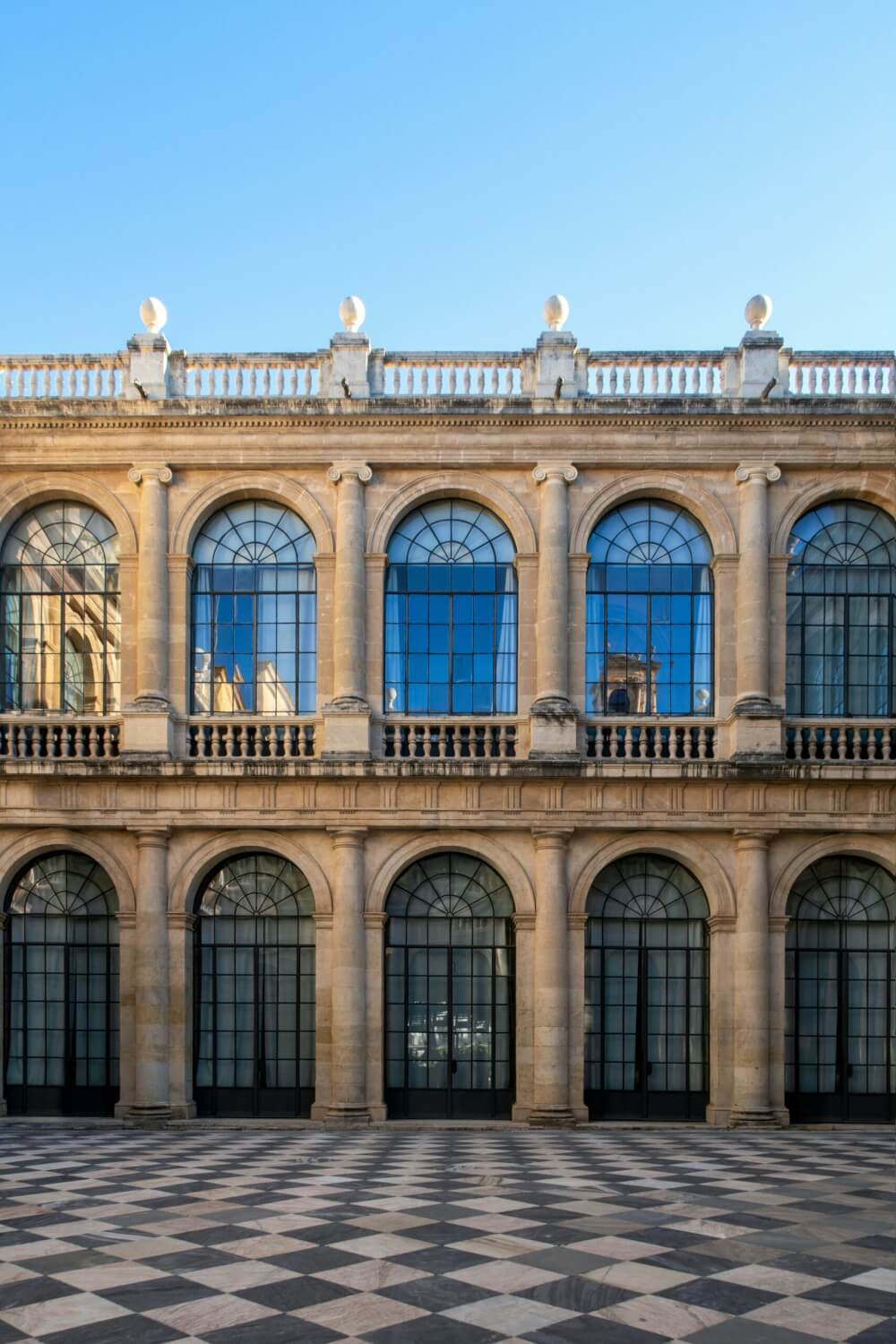
4. Plaza de España
For me, one of the most beautiful must-sees in Seville is no doubt its Plaza de España, with a design so grand and magical that it stood in as Naboo in the Star Wars prequels.
Built for the Ibero-American Exposition of 1929, the plaza showcases a stunning blend of Renaissance Revival and Moorish architectural styles, with a semi-circular building flanked by two impressive wings that curve around a large square.
The plaza’s highlights include its ornate ceramic tilework, colourful azulejos depicting scenes from Spanish history and regions, and beautiful bridges spanning over the central canal.
In my opinion, this is one of the most beautiful squares in Europe, so be sure to schedule plenty of time to admire and take in its details!
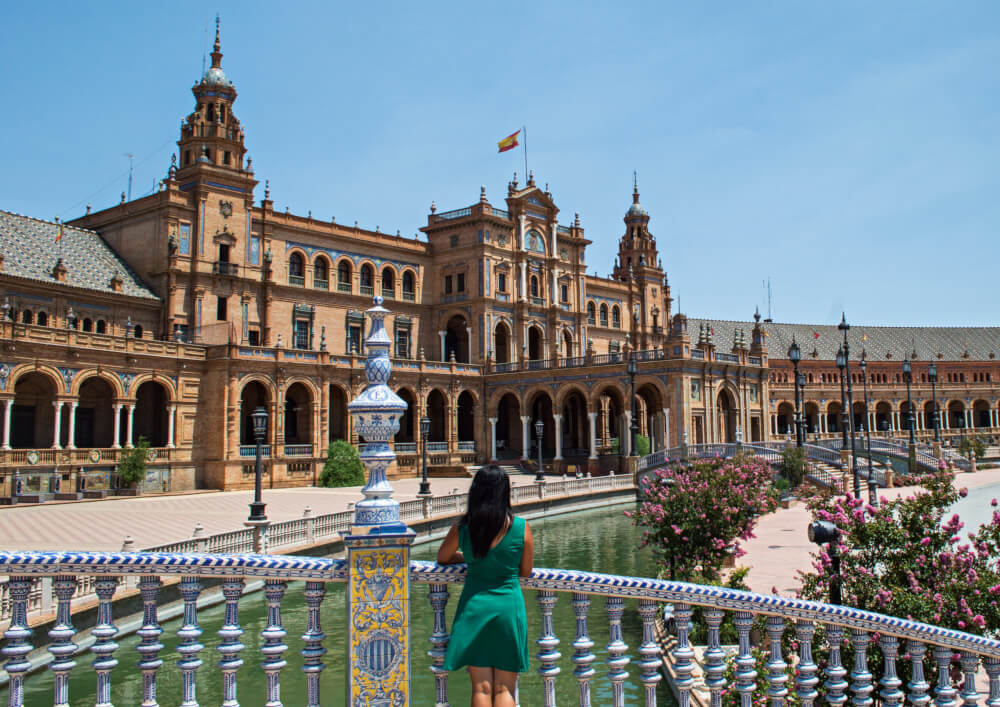
5. María Luisa Park
Elsewhere in María Luisa Park (which is where Plaza de España is located), there are plenty of other museums and points of interest to put on your list as well, especially…
- Archaeological Museum of Seville: This museum showcases a vast collection of artefacts from the prehistoric era to the Middle Ages, with a special emphasis on Roman antiquities from the nearby Italica site.
- Museum of Popular Arts and Traditions: This museum celebrates Andalusian culture through traditional crafts, costumes, and everyday objects. It’s housed in the stunning Mudéjar Pavilion and provides a fascinating insight into the region’s folk art.
- Jardin de los Leones: A pretty garden known for its fountain which features four lions holding shields.
- Plaza de América: An elegant square with a pond, pavilions and ornate gardens, located in between the two museums.
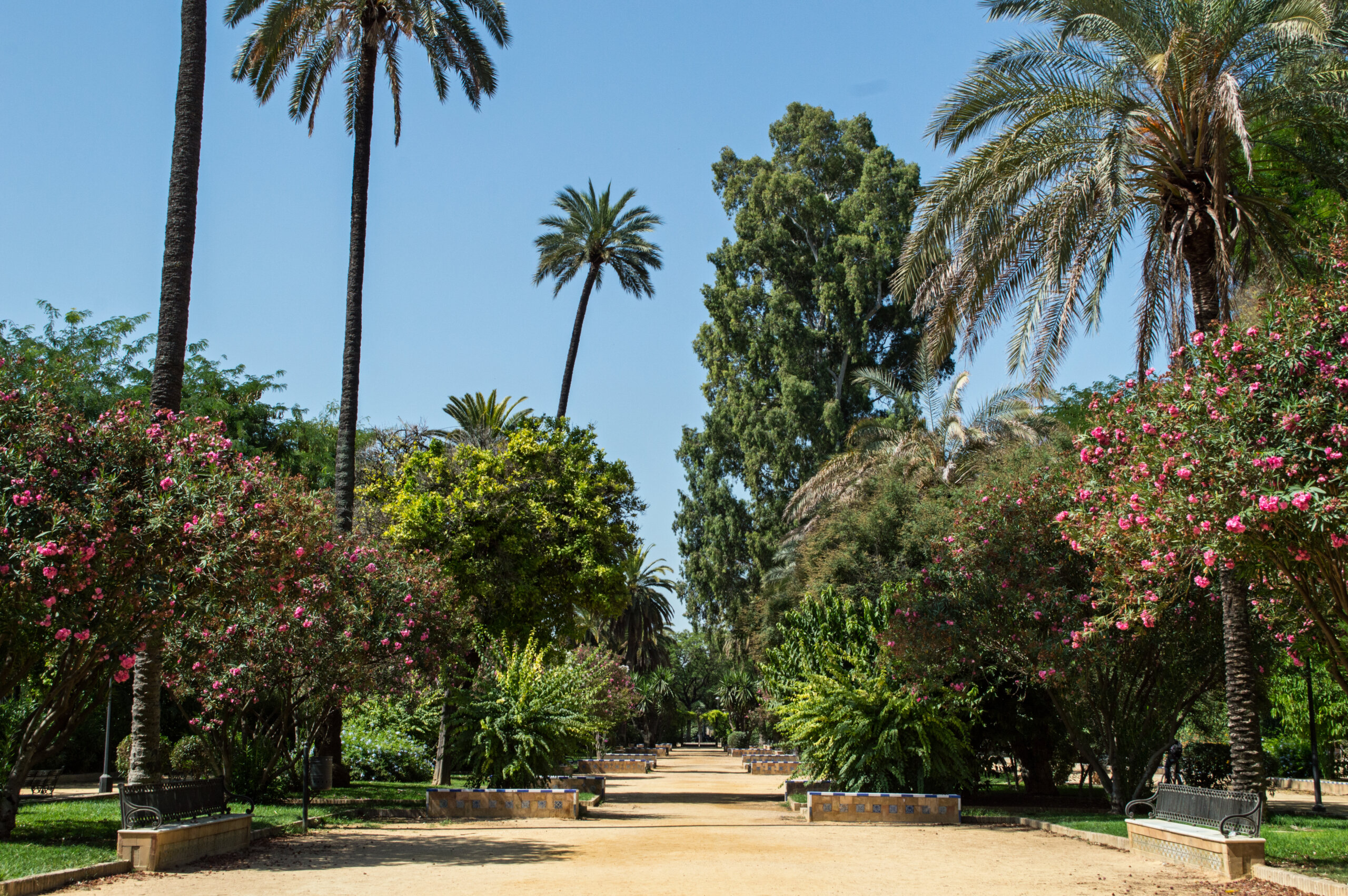
6. Seville Cathedral
Next on our list of Seville must-dos is the largest Gothic cathedral in the world – none other than Seville Cathedral, AKA Cathedral of Saint Mary of the See.
Built on the site of a former mosque following the Christian Reconquista of the city in the 15th century, the cathedral’s construction was intended to showcase the wealth and power of Seville as a flourishing maritime hub… and with visitors still coming droves centuries later to gawk at it, I think it’s safe to say they’ve succeeded.
Highlights for visitors today include its towering Giralda bell tower, originally a minaret from the mosque, as well as its awe-inspiring interior adorned with majestic altarpieces, and stunning stained glass windows.
The cathedral also houses the tomb of Christopher Columbus… so you can do with that information what you will.

7. Metropol Parasol (Las Setas)
Looking for a more modern side to Seville? The iconic Metropol Parasol is a unique wooden construction that dazzles and delights with its weird stretchy honeycomb design.
Designed by the German architect Jürgen Mayer and opened in 2011, the design here is really interesting, with its undulating structure, aiming to blend contemporary architecture with the historical feel of the city. It’s been nicknamed “Las Setas” which means “The Mushrooms” in Spanish, because it does kind of look like a bunch of giant mushrooms.
When you visit, you can explore several restaurants and a lively market underneath the wooden parasols, along with spaces for public events. But the best part is definitely heading up to the panoramic walkway on top. The views of Seville from up there are absolutely stunning, especially around sunset. Plus, there’s a terrace bar where you can chill with a drink and soak in the scenery.
PS: Underneath, you can also learn more about Seville’s history at the Antiquarium, an underground archaeological site showcasing ancient Roman remains.
8. Admire Seville’s epic Old Town architecture
We’ve talked a lot already about beautiful buildings and structures to appreciate in Seville, but honestly one of my favourite things to do is just walk around, drool a bit, and soak it all in.
So, yes, an activity I can highly recommend is a wistful stroll around the Old Town, making sure to hit up points of interest like…
- Plaza del Cabildo: A beautiful plaza with painted arches all around the edges and a fountain in the middle.
- Plaza Nueva: The public square outside City Hall, which is surrounded by trees and features a statue of Ferdinand III in the middle.
- Palacio de San Telmo: A stunning baroque palace from the 1600s which now houses the Regional Government of Andalusia. The interior is also gorgeous.
- Palacio Arzobispal: The Archbishop’s Palace, where bishops and archbishops lived, is located next to the cathedral and also worth checking out, at least from outside. You can only see the interior on two Saturdays per month, find out more here.
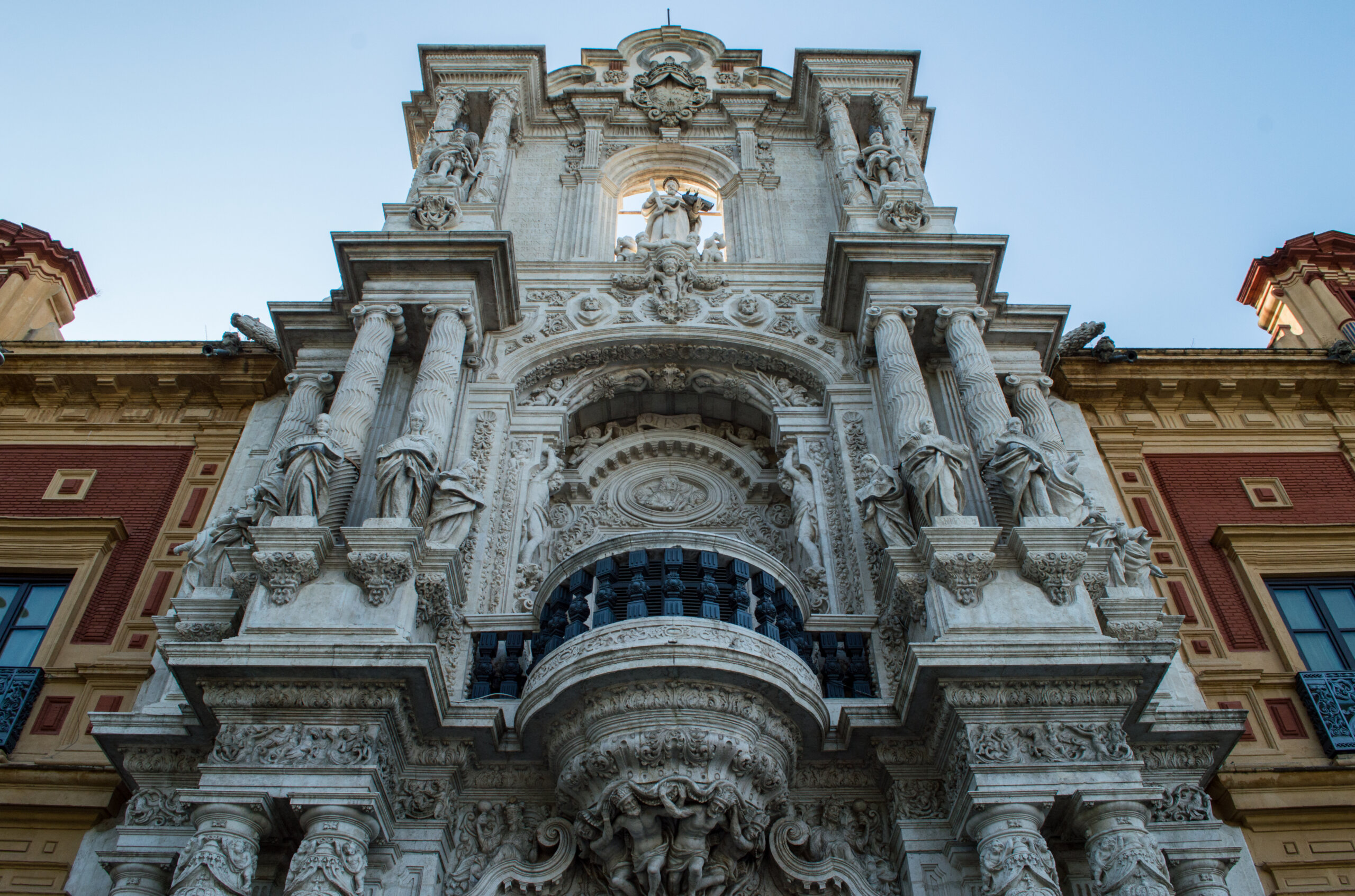
9. Barrio Santa Cruz
And while we’re on a little wandering spree, another great neighbourhood to explore in Seville is the historic Jewish quarter of Barrio Santa Cruz, filled with narrow streets, hidden squares, and authentic tapas bars.
Highlights include…
- Hospital de los Venerables: A hospital that was founded in the 17th century for old or ill priests, with beautiful frescoes throughout.
- Plaza Patio de Banderas: The “Flags Courtyard” is a wide square surrounded by historic buildings with a fountain in the middle, and gorgeous views of the cathedral.
- Plaza Doña Elvira: Another pretty plaza that’s surrounded by orange trees with a fountain in the middle, and some lovely spots to have a meal or a drink.
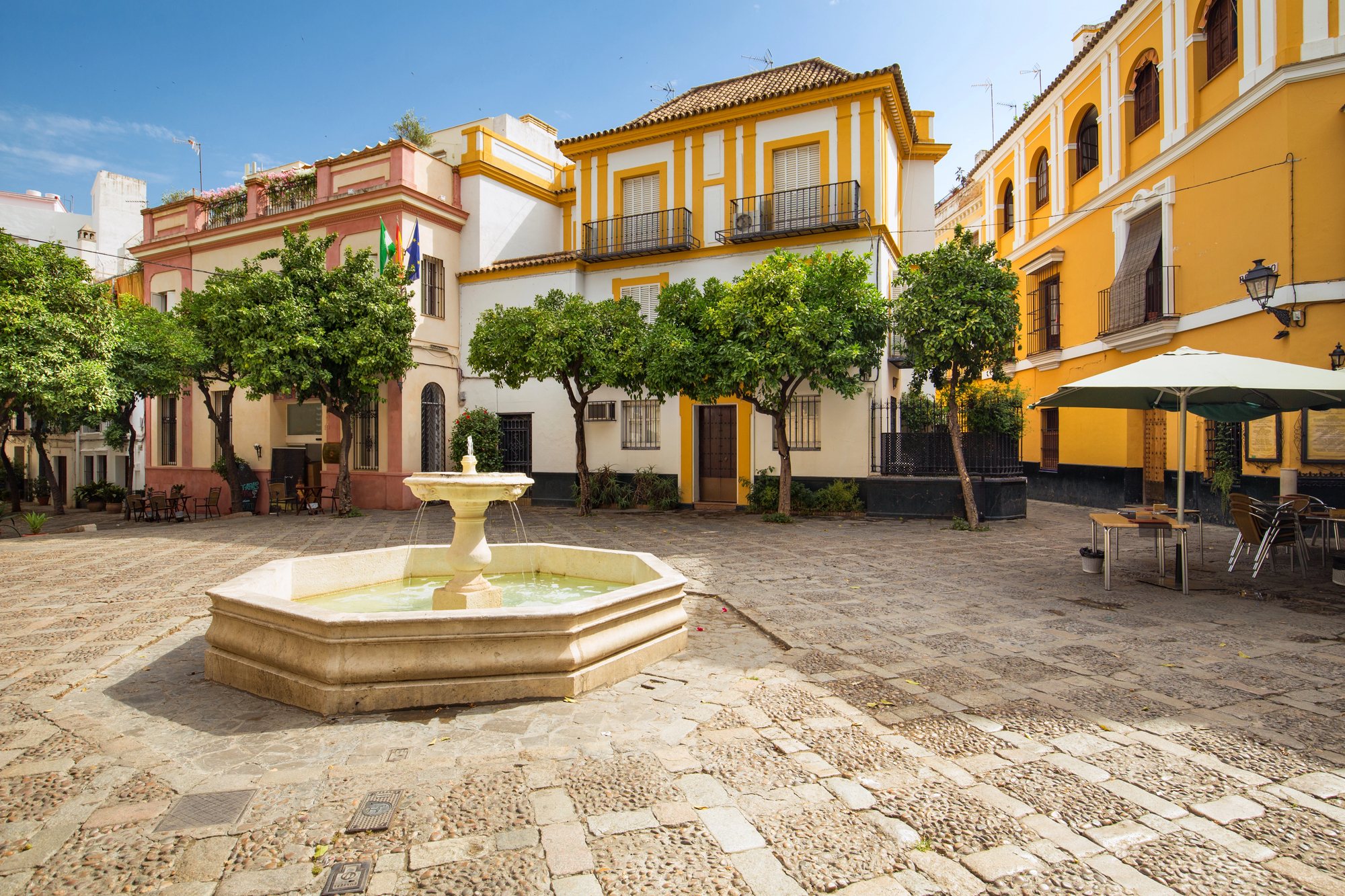
10. Explore Macarena
No, not like the dance. Though I’m sure the song is now running through your head.
Macarena is a neighbourhood in central Seville that gets its name from the Basilica of La Macarena, a prominent landmark and religious pilgrimage site housing the revered statue of the Virgen de la Esperanza Macarena.
Historically a working-class area, the Macarena neighborhood is known for its narrow streets, traditional Andalusian architecture, and lively atmosphere, with plenty of unique attractions to round out your Seville visit.
Highlights include…
- Macarena Basilica: A colourful neo-Baroque church which is known for housing the statue of ‘La Virgen de la Esperanza Macarena’ (the Virgin of Hope of Macarena), a 17th century wooden image of the Virgin Mary. It’s free to visit the Basilica but you will need to pay €4 to also explore the attached museum which contains religious artefacts.
- Torre de los Perdigones: An old shot tower from 1885 which now houses a camera obscura that shows Seville from a height of 45 metres. The tower is located in a pretty park next to the river that’s also a nice spot to relax.
- Hospital de las Cinco Llagas: The former Hospital of the Five Wounds of Our Redeemer is a gorgeous structure from the 1500s that now houses the Andalusian Parliament. There’s also a beautiful park in front of the building.
- Mercado de la Feria: While it’s kind of in the neighbourhood of Feria (hence the name) rather than Macarena, it’s right on the edge so many people count this 18th century indoor marketplace as a highlight of Macarena. It’s apparently the oldest marketplace in Seville and a great place for lunch or to shop for some gourmet gifts.
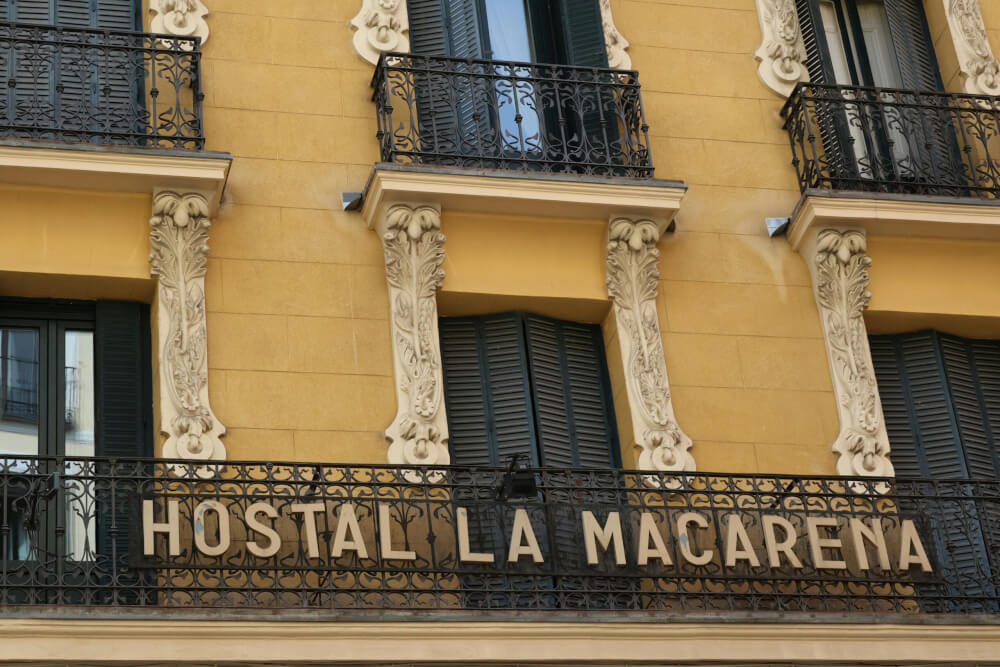
11. Wander Around Triana
If you want to get (slightly) more off the beaten path in Seville, then be sure to cross the city’s Triana Bridge to explore the Triana neighborhood, known for its vibrant ceramics and lively atmosphere.
Highlights include…
- Puente de Triana/Puente de Isabel II: The metal arch bridge that connects Triana to the city centre is officially named for Isabella II of Spain but the bridge is also often called the Triana Bridge. Walking across it is the best way to visit the Triana neighbourhood, and the first thing you’ll see at the end is the Capilla del Carmen chapel.
- Mercado de Triana: Triana’s covered market is one of the best in the city, built on the remains of Castillo San Jorge and filled with vibrant stalls. This is an excellent spot for souvenirs and gifts, as well as food. It’s open every day except Monday from 9 or 10am until 2/2:30pm.
- Calle Betis: This street next to the river is one of the best spots in Seville for shopping, dining and nightlife, plus the views are lovely too!
- Castillo San Jorge: The underground remains of this fortress now house a museum which also details its use as a prison during the Spanish Inquisition.
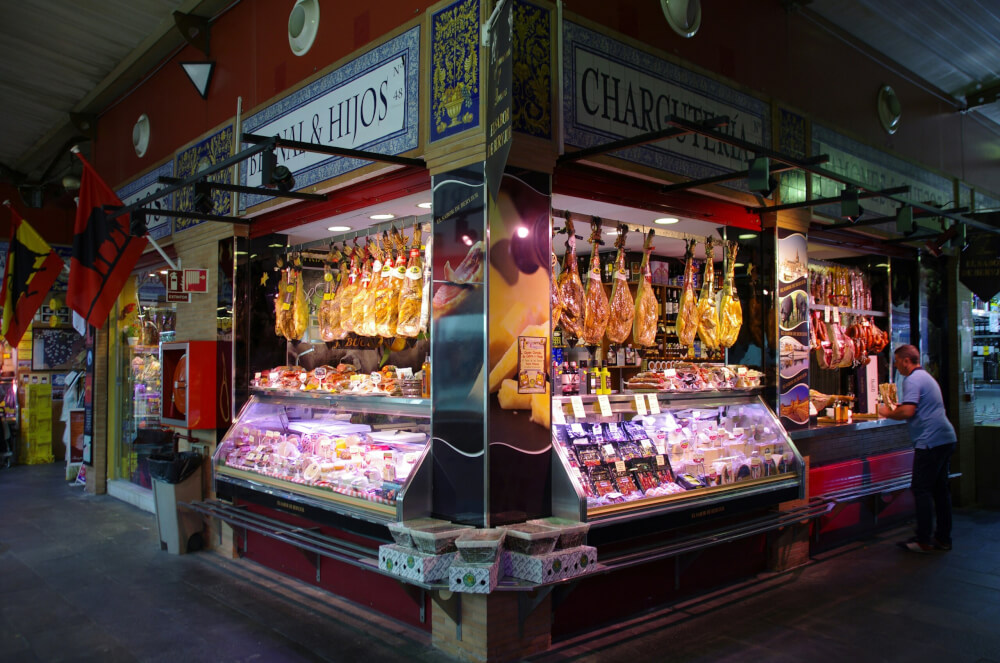
12. Flamenco Show
Now in terms of fun Seville experiences, one of the top cultural must-dos is a flamenco show.
As I mention in my Spain travel tips post, Spain is a diverse country with lots of unique cultural traditions, which is why it’s important to research the specific traditions of the region you’re visiting.
Luckily for visitors to Seville, Andalusia is considered both the birthplace and spiritual home of flamenco, a highly expressive art form characterized by its passionate blend of music, dance, and singing.
Today, Seville remains a thriving hub for flamenco, with numerous venues, festivals, and schools dedicated to showcasing and perpetuating this cherished tradition… so, make sure you book yourself in for a performance when you’re in town. There’s a number of places you can book online, like this popular pick, for instance.
13. Enjoy a boat ride on the Guadalquivir
Looking for a different perspective on Seville? Another more relaxed experience I can recommend (especially on a hot day) is a boat ride. As someone who visited Seville as part of a summer river cruise, I can confirm that this is one of the nicest ways to appreciate the beauty of the city in comfort.
For an extra nice experience, consider booking a river yacht tour like this one, which includes a welcome drink or a whole meal if you feel like it!
Or if you’re looking for something more active, you can rent a kayak or do a fun paddleboard surf tour.
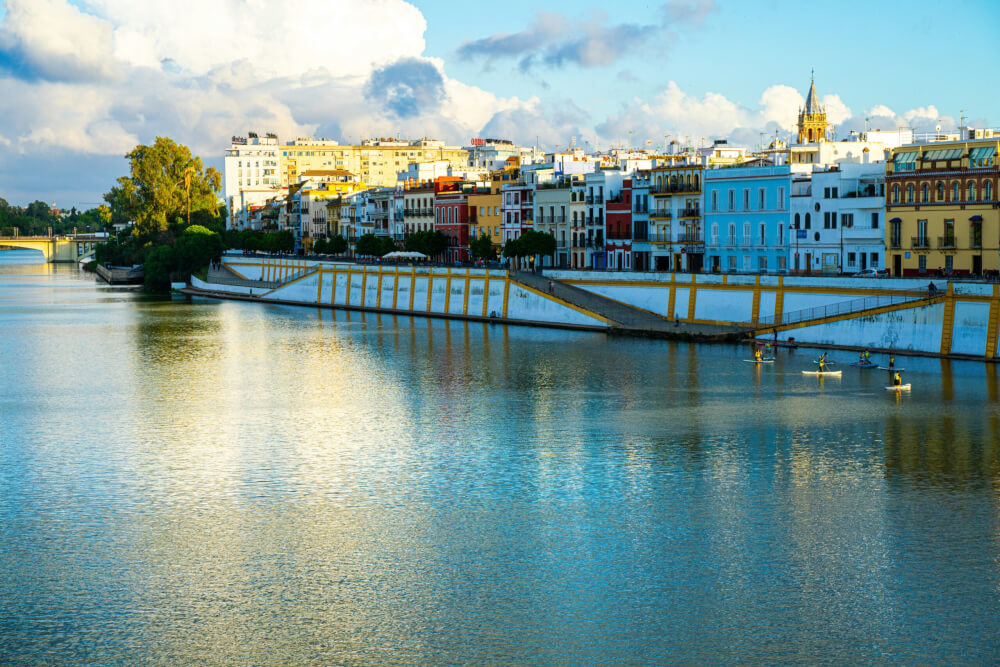
14. Visit more of Seville’s amazing churches
If you’re looking for more of an architecture/monument fix, don’t forget that Seville is full of plenty more amazing churches than just the main cathedral.
If you want to indulge your nosier side, here are some extra Seville churches to put on your list:
- Iglesia Colegial del Divino Salvador: The second-largest church in the city (after the cathedral), this one was built over the Great Mosque of Seville.
- Santa Ana Church: An exquisite example of Mudejar-Gothic architecture and the oldest church in Seville, constructed in the 1200s.
- Iglesia De San Luis De Los Franceses: The Church of Saint Louis of France, it’s a beautiful example of Andalusian Baroque but now functions as a museum rather than a place of worship.
- Capilla de los Marineros: This chapel in the Triana neighbourhood houses the Virgin of Hope of Triana and features some stunning religious tile artworks on the exterior.
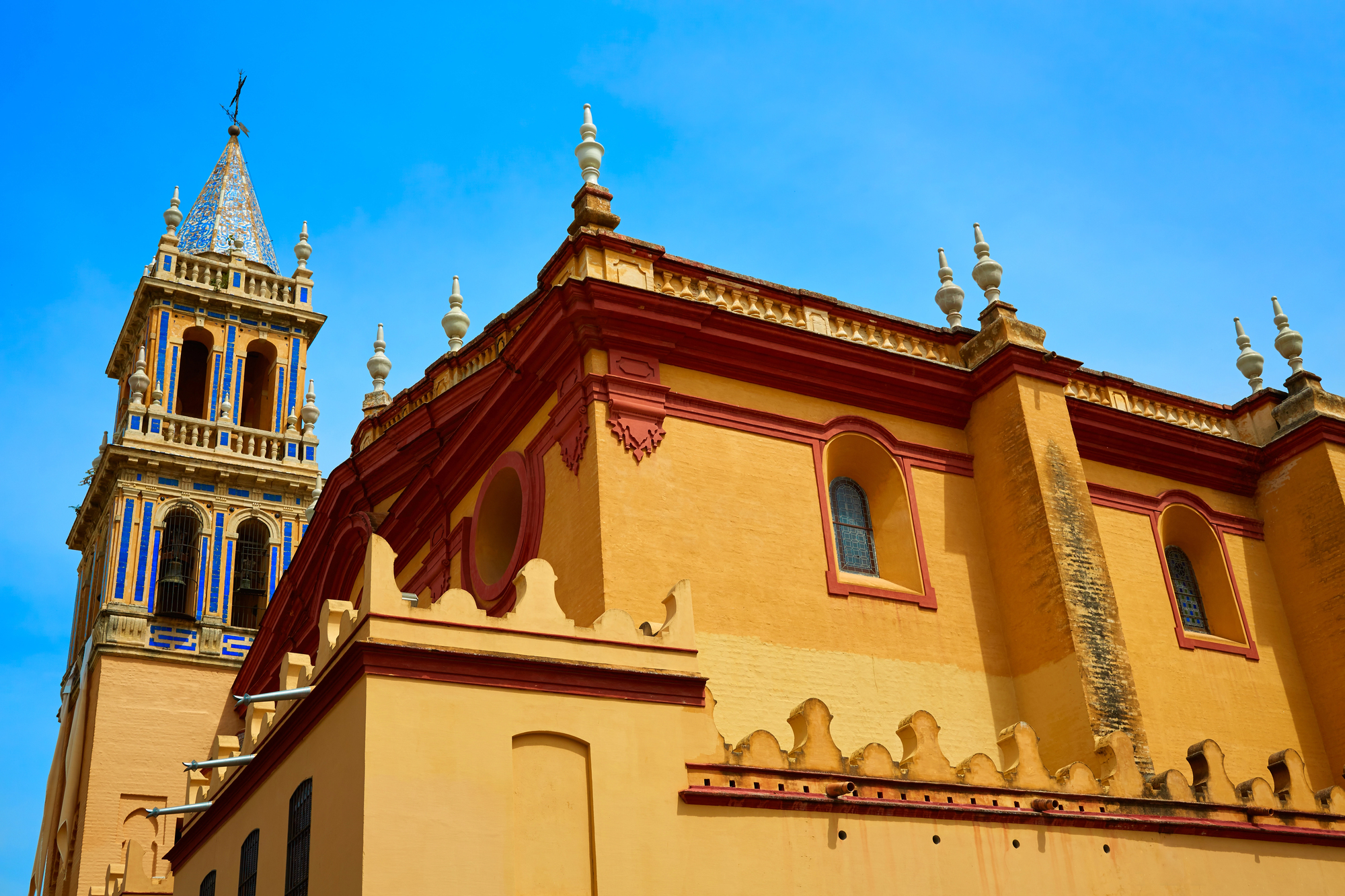
15. Peek inside a stunning palace
On a similar note, Seville is also home to a number of truly stunning palaces.
Why? Once upon a time, the city was a cultural and economic hub. During Islamic rule, the city was a major centre of the Al-Andalus region, which led to the construction of many exquisite Moorish palaces, like the iconic Alcázar.
After the Reconquista, when Christians retook the city, Seville continued to flourish, especially during the 16th century when it became the main port for trade with the Americas. Wealthy merchants and nobility built grand palaces, blending Gothic, Renaissance, and Baroque styles with the existing Moorish architecture.
Looking to get your palace fix? Here are some of the most popular ones to put on your list:
- Las Dueñas Palace: This stunning palace offers a glimpse into aristocratic life with its beautiful gardens and art collections, having been home to the noble House of Alba.
- Palacio de la Condesa de Lebrija: Known for its impressive collection of exquisite mosaics and ancient artefacts.
- Casa de Salinas: This charming 16th-century residence showcases exquisite Mudéjar and Renaissance architecture.
- Casa de Pilatos: Renowned for its blend of Gothic, Mudéjar, and Renaissance styles, this palace features stunning courtyards, intricate tilework, and a remarkable art collection.
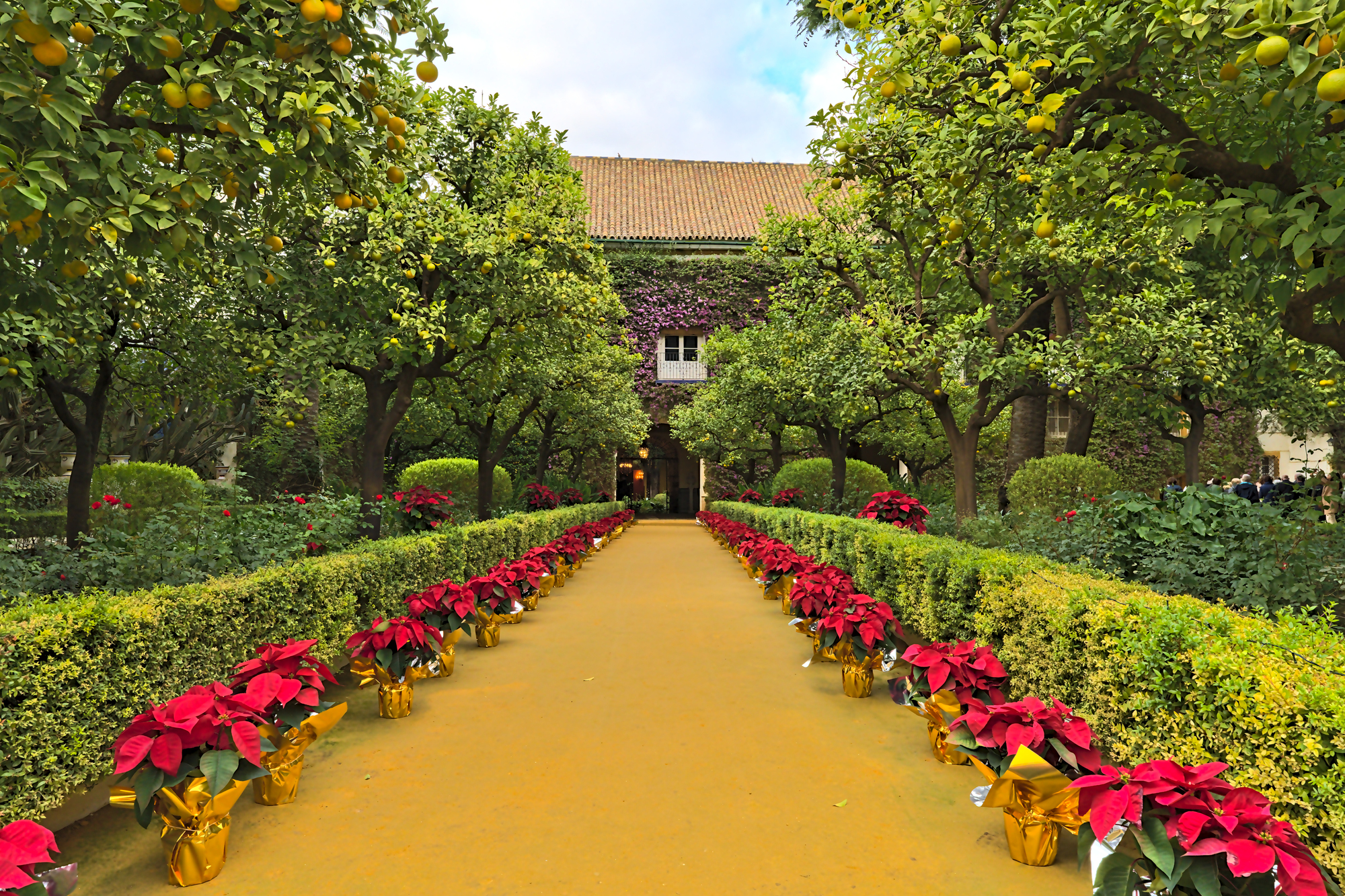
16. Head to an art museum
Looking for things to do in Seville for art lovers? Luckily, there are plenty of nice art museums to visit if that’s what you’re looking for.
Some of the most popular choices include…
- Museum of Fine Arts: Housed in a gorgeous 17th century palace, this museum holds many masterpieces from the medieval period to the early 20th century, many by Spanish artists and with a particular focus on artists from Seville. You can join a guided tour if you want to learn more about the museum and the art on display.
- CaixaForum Sevilla: This cultural centre displays all sorts of different art exhibitions throughout the year, from photography to fashion and even comic book art. Check out the website to see what’s on!
- Centro Cerámica Triana: A museum dedicated to the history and craft of making the beautiful ceramic tiles you’ll see all over Seville. Located inside a former ceramics factory in the Triana neighbourhood.

17. Visit a smaller museum
On a similar note, Seville is also home to numerous smaller museums which I wouldn’t necessarily say are must-sees on their own, but may be of interest if you find their niche topics intriguing.
Some popular small museums in Seville include…
- Museum of Flamenco Dance: Learn about the passionate world of flamenco through interactive exhibits, live dance performances, and multimedia displays that celebrate this quintessentially Spanish art form.
- Museo Naval: Explore Spain’s maritime history, featuring model ships, naval artefacts, and exhibits, inside the Torre del Oro.
- Museum of Illusions: For a wacky experience in Seville, check out some mind-bending optical illusions, holograms, and immersive rooms.
- Museo Casa de la Ciencia: Get your learn on through engaging exhibits on astronomy, geology, and biodiversity, alongside interactive displays (mainly meant for kids, but would appease science nerds of all ages I think)
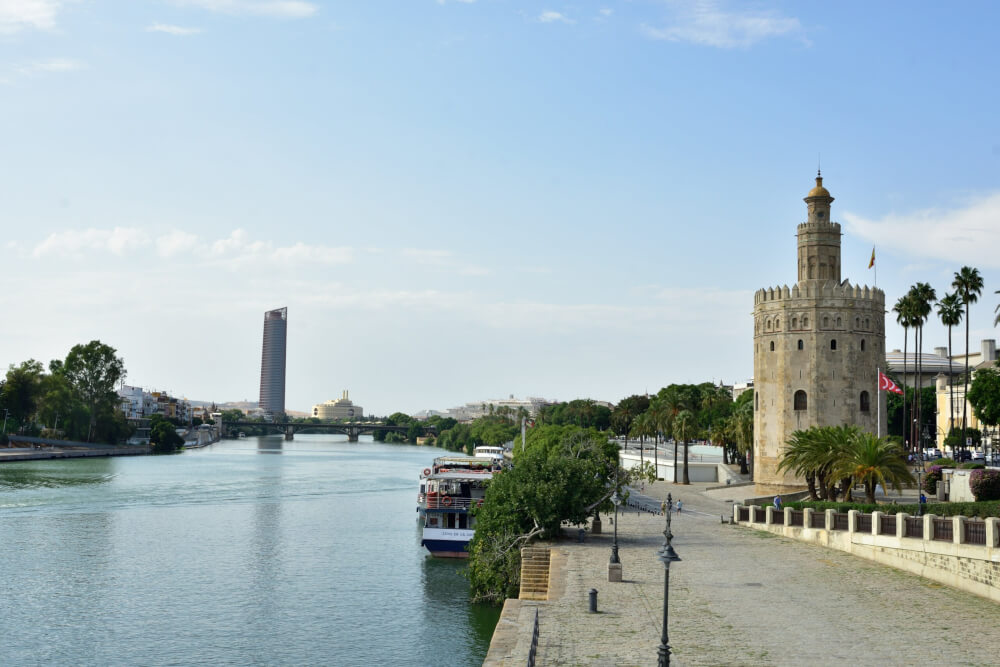
18. Do a food tour
Whether DIY or guided (like this one), I think one of the best things to do in Seville (truly) is to just eat your face off through a tour of local must-eats. Andalusian cuisine is flavour-packed and delicious – with many knockout dishes to try, like…
- Gazpacho: A refreshing cold soup made from ripe tomatoes, cucumbers, peppers, onions, garlic, olive oil, vinegar, and bread – so good on a hot day!
- Salmorejo: A thick and creamy cold soup made from tomatoes, bread, garlic, olive oil, and sherry vinegar, typically topped with hard-boiled eggs and Jamón ibérico (Iberian ham).
- Tortilla de Patatas: A classic Spanish omelette made with potatoes, eggs, onions, and olive oil, usually enjoyed as a tapa or served as a main course with salad and bread.
- Rabo de Toro: A rich oxtail stew made from braised oxtail cooked with onions, carrots, tomatoes, garlic, wine, and spices… often served with a side of creamy mashed potatoes or crusty bread.
To try a ton of flavours at once, consider going on a Tapas Crawl like this one!
Or for a more DIY version, you can head to different restaurants or food markets like Mercado de Triana and Mercado de Feria, where you can sample different delicacies as you go.
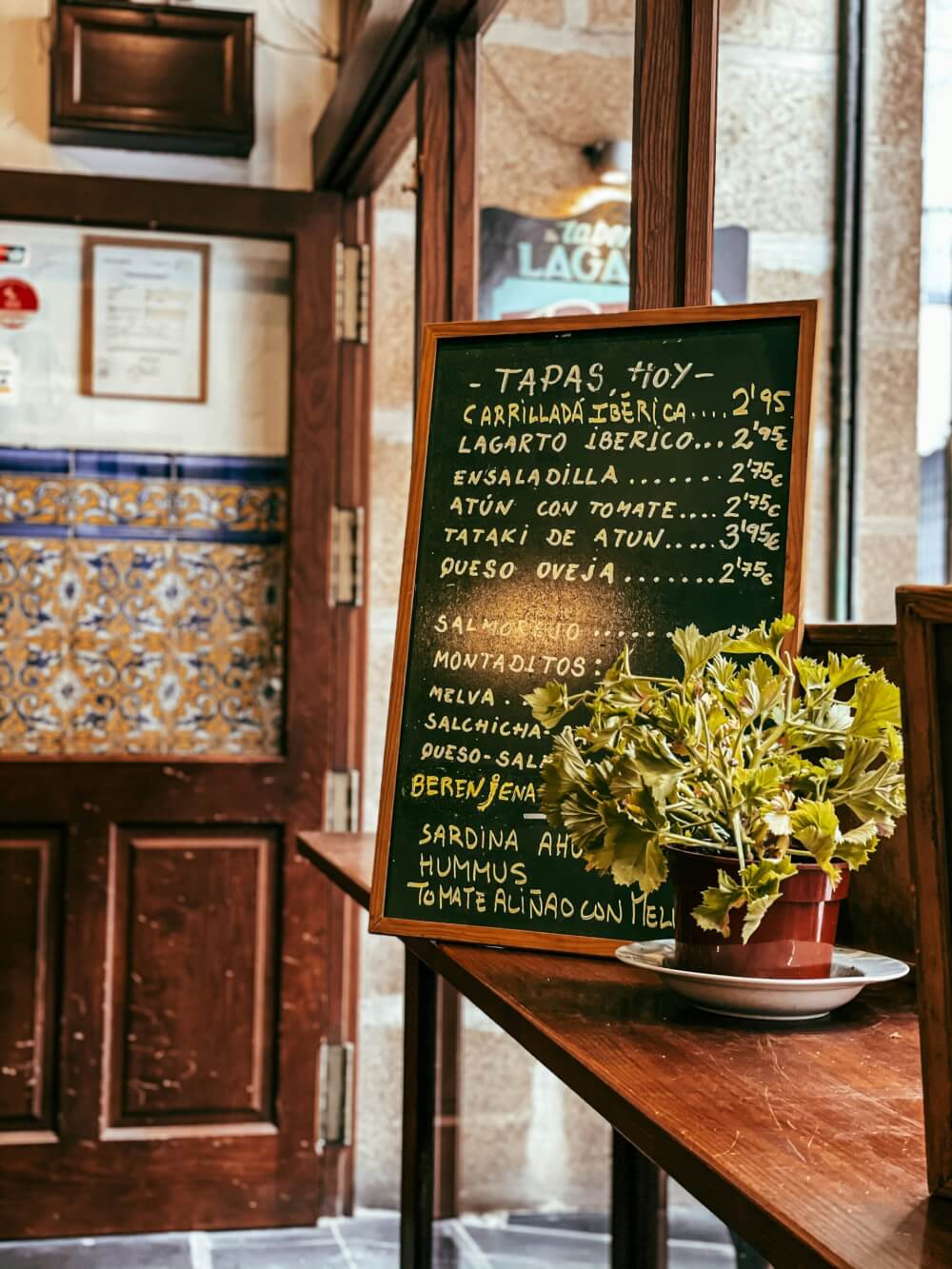
19. Try a cooking class
On a related note, one of the best souvenirs you can give yourself in Seville is the ability to recreate your favourite dishes once you get home.
So, if you’re into cooking, then one of the best things to do in Seville is a fun cooking class like this one, which includes multiple courses which you can enjoy eating afterwards accompanied by delicious Sangria. This is actually a really good deal as you’ll learn to make a starter, some tapas, paella and a sorbet for dessert. You might need to roll back to your accommodation afterwards though, as you’ll be so full of good food and drink!

20. Real Maestranza Bullring
To make one thing clear: I don’t support bullfighting at all, and was hesitant to put this attraction on the list, but for the sake of thoroughness, it’s here.
The Real Maestranza Bullring is a major Seville attraction, famous of course for the fact that it hosts one of the most renowned bullfighting festivals in the world. It’s also one of the oldest bullrings in Spain, dating back to the 18th century.
One of the highlights for visitors is the museum inside the bullring. It has all sorts of exhibits, from traditional matador costumes to old posters and art that tell the story of bullfighting in Seville.
If you want to learn about the history of bullfighting here you can also join a guided tour, which doesn’t include any actual bullfighting.

21. Monastery of Santa Maria de las Cuevas
Founded in the 15th century, the monastery served as a religious retreat for Carthusian monks until the 19th century, when it was secularized and repurposed for various uses.
The monastery’s highlights include its ornate cloisters, Baroque chapel, and intricate tilework, as well as its association with Christopher Columbus, who purportedly stayed here during his final preparations before his voyage to the Americas. His remains were also interred here for thirty years after his death.
Today, the monastery is home to the Andalusian Contemporary Art Center, where visitors can see Spanish art dating from the mid-20th century through to the present day. There’s a particular emphasis placed on the history of Andalusian art, but they do rotate themed exhibitions throughout the year.
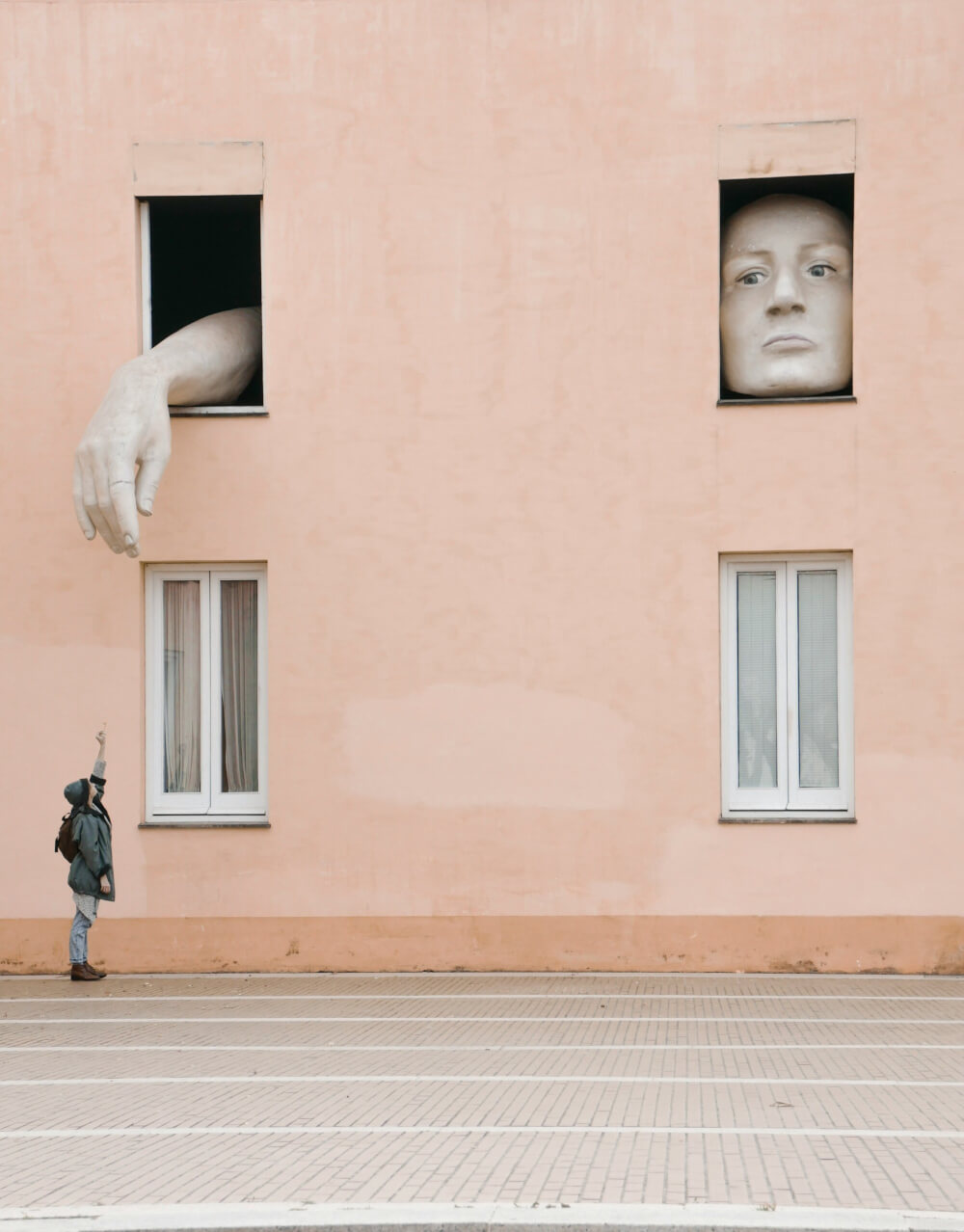
22. Do an epic day trip
Of course, Seville makes a great base for a variety of fun day trips in and around Andalusia, so if time permits, be sure to add a day trip to your list!
Some popular picks include…
- Granada and the Alhambra: Journey into Spain’s Moorish past, with the Alhambra’s breathtaking palaces and gardens providing a stunning example of Islamic architecture. Book a tour here.
- Hiking the Caminito del Rey: Adventurers will love this thrilling hike along a dramatic gorge, featuring narrow walkways and stunning views of the natural landscape. Book a tour here.
- Córdoba and Carmona: Visiting these historic cities together allows you to explore the magnificent Mezquita in Córdoba as well as Carmona’s ancient Roman and Moorish landmarks. Book a tour here.
- Pueblos Blancos and Ronda: Discover the picturesque white villages of Pueblos Blancos and the dramatic cliffside town of Ronda. Book a tour here.
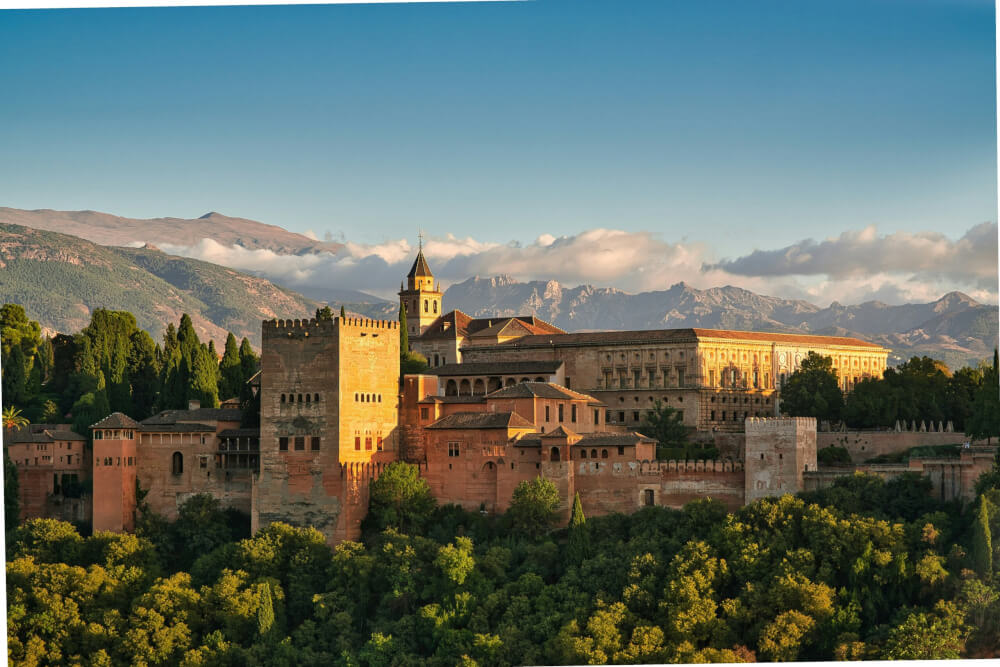
23. Isla Mágica
Oh! Last but not least, if you’re looking for something to do in Seville with kids, or maybe just want to add a whimsical touch to your visit, there’s also Isla Mágica, a theme park in Seville with rides and attractions for all ages.
This is a theme park with a historical twist, set in the Age of European Exploration of the Americas. There are pirate rides and fireworks shows, along with an immersive 4D cinema. As well as traditional rollercoaster type rides you can also experience traditional Andalusian culture with flamenco dance and horse-riding shows.
If you’re visiting in summer it’s also worth adding on a ticket to the Agua Mágica water park so that you can cool off in the wave pool, lazy river or just sunbathe on the beach!
Did I miss any of your favourite things to do in Seville?
Let me know in the comments so I can add more of the best Seville activities to the list. Happy and safe travels! 🙂



